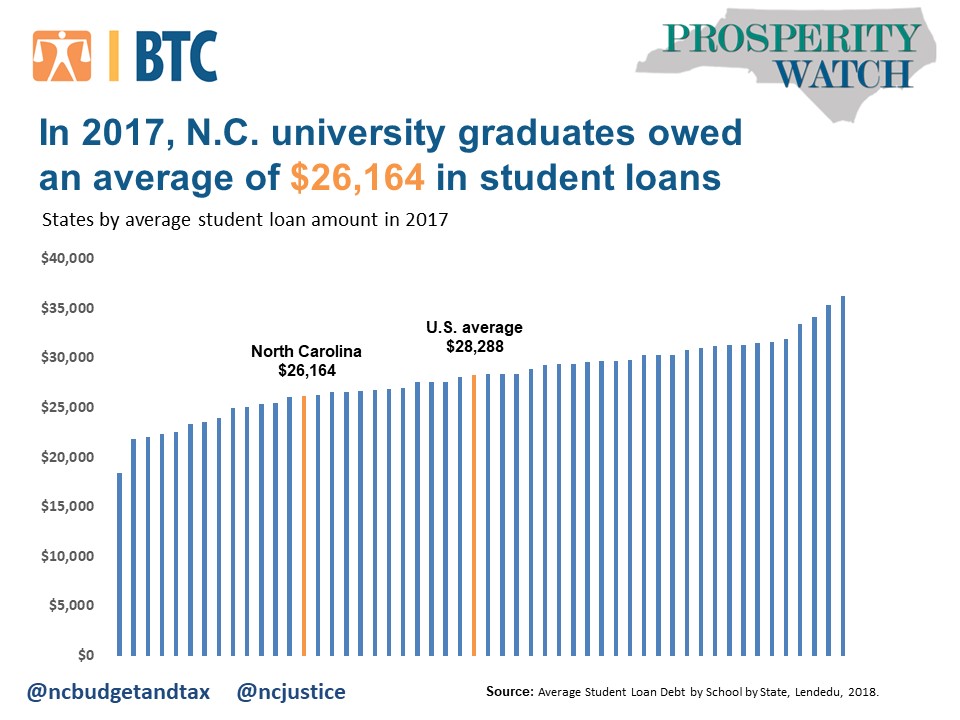According to new data from LendEdu, the average amount of student debt held by borrowers was $26,164, an increase of 3.52 percent from last year. North Carolina ranks 14th in the nation — faring better than most other states — with the average student owing $2,124 below the national average.
Western Carolina ranks 1st in the state and 27th in the nation, with students averaging $15,669 in debt after graduating in 2017. High Point and Chowan universities rank near the bottom, with students averaging $37,025 and $38,443, respectively.
Rising costs of attending college is not new. Since 2008, North Carolina decreased state spending on higher education by 20 percent. In that same time period, tuition at our public universities has increased by an average of 42 percent, or $2,051. Despite today’s workers being 50 percent more likely to have a college degree than 30 years ago, wages have remained stagnant and expenses have increased, leaving graduates with fewer assets, less wealth, and diminished purchasing power.
So what does this mean for North Carolina’s economy?
Although young adults are saving more money than the generation before them, their debt loads make them less able to invest in critical wealth building activities such as home ownership. In 1989, the average young adult household owed 85 cents for every dollar the household made in income. Today, the average young adult household owes $2.05 for every dollar earned.
The data reveals disparities beyond generational differences. Last year, only 58 percent of college graduates left with some sort of debt. The percentage of graduates with debt tends to be higher at state institutes and Historically Black and Minority Colleges and Universities. For example, 89, 69, and 68 percent of graduates at UNC-Greensboro, ECU, and UNC-Charlotte borrowed money, respectively. At North Carolina Agriculture and Technical State University and Saint Augustine’s University, 90 and 93 percent of graduates borrowed, respectively. While the average graduate at Wake Forest University left with more than $33,000 in student loans, only 33 percent of the graduating class borrowed any money at all.
Those who attend institutions that disproportionally serve students who come from less privilege or who don’t have large endowments to provide scholarships are more likely to leave with serious debt.
 Justice Circle
Justice Circle 